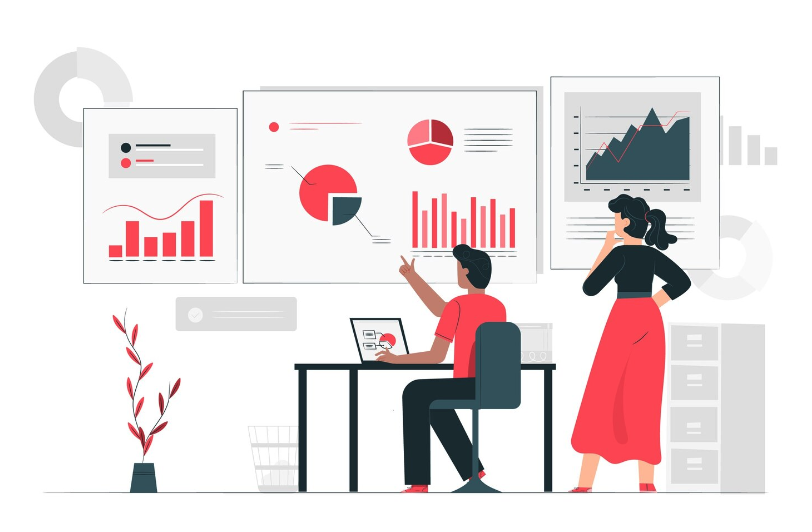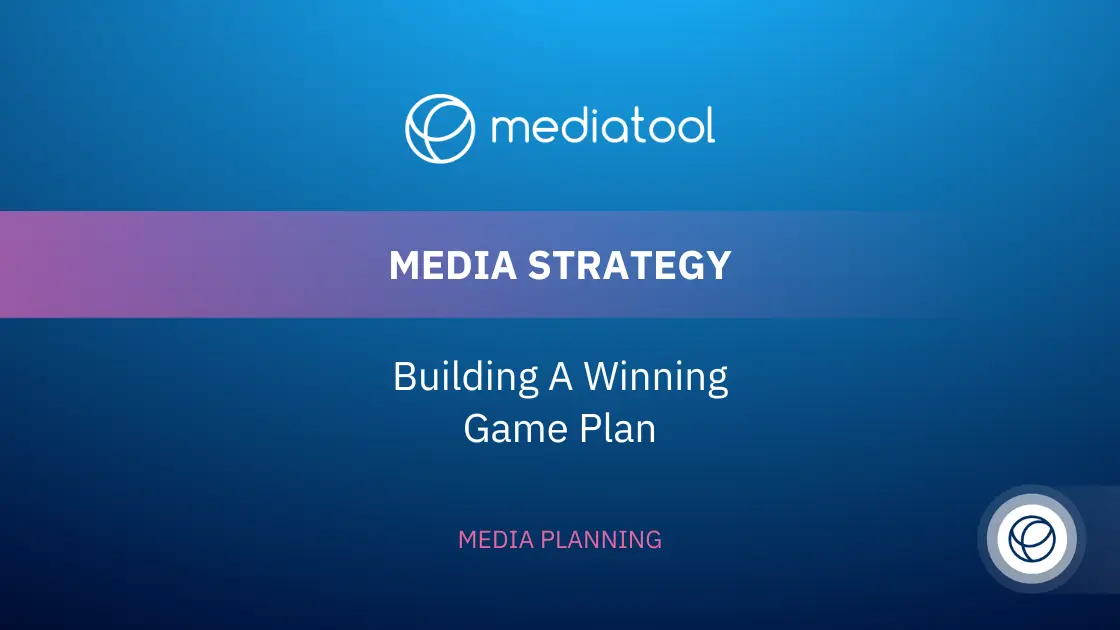Data storytelling simplifies the challenge of sifting through mountains of data. Imagine facing endless spreadsheets and reports, each packed with potential insights yet daunting to decipher. This is where data storytelling shines, turning complex numbers into engaging and understandable stories.
It cuts through the noise, highlighting the crucial insights that matter. By transforming data into narratives, it makes it easier for anyone to grasp the underlying messages and make informed decisions. Data storytelling doesn’t just present information; it turns it into actionable stories that lead to real change.
What is Data Storytelling?
Data storytelling combines data analysis with narrative techniques to make complex data understandable and engaging. It’s not just about presenting numbers; it’s about weaving those numbers into a story that highlights key insights and drives action.
This process involves visualizing data to enhance the narrative, making the abstract tangible and the complicated simple. At its core, data storytelling bridges the gap between data science and communication skills, making data meaningful and actionable for its intended audience.
Through the skillful use of visualizing data, storytellers can transform raw data into compelling narratives that captivate and inform, ensuring the message not only resonates but also inspires.
The Benefits of Data Storytelling
In the digital age, where data is as vast as oceans, the importance of data storytelling has skyrocketed.
Why zero in on data storytelling?
Let’s take a look.
Making Data Accessible
Data storytelling transforms the abstract and often impenetrable world of data into an approachable and understandable narrative. Not everyone has the expertise to navigate through the complex landscapes of spreadsheets or the high volume of data generated by today’s information technology systems.
Data storytelling simplifies this complex world, translating the intricate language of data into stories that resonate. By focusing on relevant data and key data points, data stories make the invisible visible, turning raw data into insights that are easy to grasp.
Effectively Communicating Insights
One of the key components of data storytelling is its ability to communicate insights effectively. It’s not just about the data itself but the story it tells. Good data stories ensure that the valuable insights from data analysis aren’t lost in translation.
They highlight the most crucial data points, ensuring the intended message reaches the audience clearly and compellingly. A data analyst or data scientist plays an essential role here as they collect, analyze, and distill it into key insights that form the backbone of any good data story.
Driving Change
Beyond making data accessible and communicating insights, data storytelling has the power to drive change. Compelling data stories can influence decisions and shape directions in business, marketing campaigns, and organizational strategies.
They are a powerful example of how data, when narrated well, can impact decision-making processes. By presenting data in a narrative format that includes a beginning, middle, and end, data storytelling can highlight trends, predict outcomes, and suggest actions in a persuasive and memorable way.
Data Stories vs. Data Visualizations

While often used interchangeably, data stories and data visualizations occupy different, though overlapping, spaces in the landscape of data communication.
Data Visualization: The Visual Aspect
Data visualization focuses on the visual representation of data. Through graphs, charts, maps, and more, it aims to present data in a way that’s immediately understandable at a glance.
These visual elements are crucial in breaking down complex information, providing a snapshot of data insights, and highlighting trends and patterns.
However, data visualization is just one part of the puzzle.
Data Storytelling: The Narrative Dimension
Data storytelling goes further by weaving these visual elements into a compelling narrative. This narrative supplies context, adding depth and meaning to the visualized data. It’s about telling stories with data, where the data visualizations serve as key players in the narrative, but the story encompasses them, providing a fuller picture.
Data storytelling offers a more holistic view of the data by integrating data points, relevant data, and insights within a structured narrative. It’s not just about showing; it’s about explaining and persuading.
In recent decades, as we’ve navigated the complex world of big data, the distinction between data stories and data visualizations has become increasingly important. While data visualizations can effectively represent data, they often lack the context and narrative needed to fully engage and inform the audience.
Data storytelling fills this gap by combining the clarity and immediacy of visual data representation with the depth and resonance of narrative storytelling. It’s a powerful tool for anyone looking to tell stories, drive change, and make sense of the vast amounts of data that define our world today.
How to Tell a Story with Data
Telling a compelling story with data is an art that requires meticulous preparation, keen analysis, and creative presentation. The process blends data science with narrative techniques, aiming to effectively communicate insights in an engaging way. Here’s how to master this craft:
Collect and Analyze Data
The foundation of every good data story begins with the collection and analysis of data. Data analysts and data scientists play a crucial role here, leveraging their skills to sift through high volumes of data to find relevant pieces.
This stage involves identifying data sets pertinent to the narrative you wish to tell. Whether it’s through business intelligence tools, data analytics platforms, or manual data collection methods, the goal is to gather accurate and meaningful insights.
Identify Key Insights
Once your data is collected, the next step is to distill it into key insights. This phase is about sifting through the complex information to find the golden nuggets that will form the backbone of your story.
It’s important not to cherry-pick data to fit a preconceived narrative; instead, let the data guide you to its most compelling stories. Effective data storytelling hinges on your ability to highlight these insights clearly, ensuring they provide context and drive the narrative forward.
Consider Your Intended Audience
Knowing your audience is critical in crafting a data story that resonates. Tailor your narrative to match their level of understanding, interests, and what makes sense to them. This consideration influences the complexity of the presented data and how it’s visualized.
Data journalism, for instance, often requires translating data analytics into stories that the general public can grasp, bridging the gap between complex data and everyday understanding.
Use Data Visualization Tools
Visuals are a key component of effective data storytelling. Data visualizations such as charts, graphs, and line charts play a pivotal role in making your story accessible. These powerful tools help to illustrate trends, patterns, and correlations in the data, providing a visual story that complements the narrative.
However, it’s essential to use these visuals wisely to avoid clutter and confusion, ensuring they add real value to your story.
Weave Your Insights and Visuals into a Clear Data Story
The final step is to bring it all together into a clear, compelling story. This involves weaving your key insights and visualizations into a narrative that engages your audience.
A good data story does more than just present facts; it tells a story, providing context, making complex information understandable, and highlighting the full story behind the data.
5 Tips for an Effective Data Story

1. Start with Your Audience
An effective data story begins with a deep understanding of its audience. Know their interests, knowledge level, and what engages them. This ensures your story hits home, making it more likely to have an impact. Tailoring your narrative to your audience’s perspective is a cornerstone of effective data storytelling.
2. Focus on Key Insights
A common pitfall in data storytelling is overwhelming your audience with too much data. To avoid this, focus on the key insights that are most relevant to your narrative. Highlighting these insights ensures your story remains focused and powerful, making it easier for your audience to grasp the whole picture and the key points.
3. Use Visuals Wisely
Visuals are indispensable in telling compelling stories with data. They provide a visual context that can make complex data more understandable. Use data visualizations like graphs, maps, and data visualisations to support your narrative, but ensure they are clear and to the point. The aim is to complement your story, not complicate it.
4. Keep It Simple
Complex jargon and overly technical language can alienate your audience. Strive for simplicity in your language and presentation. Keeping your narrative straightforward makes your data story accessible to a broader audience, enhancing its effectiveness in communicating insights.
5. End with a Call to Action
A powerful data story doesn’t just inform; it inspires action. Conclude your narrative with a clear and compelling call to action. This could be a recommendation for change, a prompt for further discussion, or a suggestion for decision-making. Encouraging your audience to act upon the insights provided adds real value to your data story, making it a powerful tool for driving change.
Wrap Up
Data storytelling is more than just presenting numbers. It’s about leveraging data to tell compelling stories that inform, engage, and inspire. With the right approach, anyone can transform complex data into a narrative that resonates, driving understanding and action in an increasingly data-driven world. Remember, a good data story is not just about the data; it’s about making that data meaningful to your audience.





